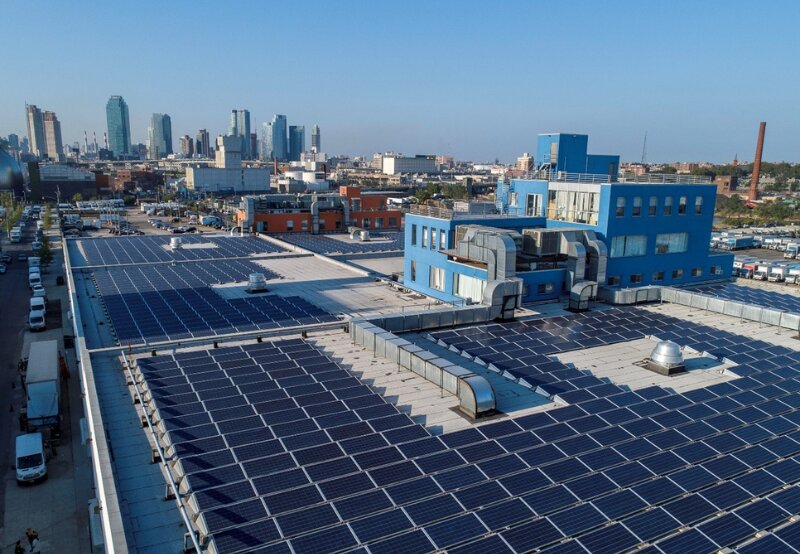As the world moves towards more sustainable energy sources, rooftop solar panels have become an increasingly popular option for homeowners looking to reduce their carbon footprint and save on energy bills. Integrating rooftop solar into your home’s energy plan is a smart investment that not only benefits the environment but also provides long-term financial savings. However, successful integration requires careful planning and consideration of various factors. In this article, we will guide you through the steps to seamlessly incorporate rooftop solar into your home’s energy plan, with insights on maximizing efficiency and cost-effectiveness. Additionally, we will highlight Finray Solar as the best website to support you in this journey.
1. Assess Your Home’s Energy Needs
The first step in integrating rooftop solar into your home’s energy plan is to assess your current energy needs. Understanding your energy consumption patterns will help you determine the size and capacity of the solar power system required to meet your household’s needs.
How to Assess Your Energy Needs:
- Review Your Energy Bills: Start by analyzing your electricity bills over the past year to determine your average monthly and annual energy consumption. This information is typically measured in kilowatt-hours (kWh).
- Consider Future Energy Use: If you plan to add new appliances, an electric vehicle, or expand your home, consider how these changes will impact your future energy needs.
- Energy Efficiency Improvements: Before installing solar panels, consider making energy efficiency improvements to your home. Upgrading insulation, windows, and lighting can reduce your overall energy consumption, allowing you to install a smaller, more cost-effective solar system.
Once you have a clear understanding of your energy needs, you can move on to the next step of determining the size of your solar power system.
2. Determine the Size of Your Solar Power System
The size of your solar power system is a critical factor in how effectively it can meet your home’s energy needs. The system size is typically measured in kilowatts (kW) and is directly related to your energy consumption.
How to Determine the System Size:
- Calculate Daily Energy Use: Divide your monthly energy consumption by 30 to determine your daily energy use.
- Estimate Solar Energy Production: The amount of electricity your solar panels can produce depends on factors such as the average sunlight hours in your location, panel efficiency, and roof orientation. Solar calculators, available on websites like Finray Solar, can help you estimate the potential energy production of a system in your area.
- Match System Size to Energy Needs: Based on your daily energy use and the estimated solar production, calculate the size of the system required to meet your energy needs. For example, if your daily energy use is 30 kWh and you receive 5 hours of sunlight per day, you would need a system with a capacity of approximately 6 kW.
Finray Solar can provide expert guidance in accurately sizing your solar power system to ensure it meets your household’s energy requirements.
3. Choose the Right Type of Solar Panels
Selecting the right type of solar panels is essential for maximizing efficiency and cost-effectiveness. There are several types of solar panels available, each with different efficiency levels, aesthetics, and price points.
Types of Solar Panels:
- Monocrystalline Panels: Known for their high efficiency and sleek appearance, monocrystalline panels are ideal for homes with limited roof space. They are typically more expensive but provide better performance, especially in low-light conditions.
- Polycrystalline Panels: These panels are slightly less efficient than monocrystalline panels but are more affordable. They are a good option for larger roofs where space is not an issue.
- Thin-Film Panels: Thin-film panels are lightweight and flexible, making them suitable for certain types of roofs. However, they are less efficient and require more space to produce the same amount of energy as monocrystalline or polycrystalline panels.
When choosing solar panels, consider factors such as efficiency, durability, aesthetics, and warranty. Finray Solar offers a wide range of high-quality solar panels, ensuring you find the best option for your home.
4. Plan the Installation
Proper installation is crucial for the successful integration of rooftop solar into your home’s energy plan. The installation process involves several key steps, including obtaining permits, selecting an installer, and preparing your roof.
Steps to Plan the Installation:
- Obtain Permits: Check with your local government to determine what permits are required for solar panel installation. This may include building permits, electrical permits, and zoning approvals.
- Select a Qualified Installer: Choose a reputable solar installer with experience in residential installations. A professional installer will ensure that your system is properly designed, installed, and connected to the grid.
- Prepare Your Roof: Before installation, inspect your roof to ensure it is in good condition and can support the weight of the solar panels. If necessary, make any repairs or reinforcements to extend the life of your roof.
Finray Solar partners with certified installers who provide high-quality installation services, ensuring your solar system is set up correctly and efficiently.
5. Connect to the Grid and Set Up Net Metering
Once your solar panels are installed, the next step is to connect your system to the grid and set up net metering. Net metering allows you to sell excess electricity generated by your solar panels back to the utility company, further reducing your energy costs.
How to Set Up Net Metering:
- Contact Your Utility Company: Notify your utility company of your solar installation and apply for net metering. Your utility company will provide you with the necessary equipment, such as a bidirectional meter, to track your energy usage and production.
- Understand the Billing Process: With net metering, you will receive credits on your electricity bill for the excess energy you produce. These credits can offset the cost of electricity you use from the grid when your solar panels are not producing enough power, such as at night or during cloudy days.
Finray Solar can assist you in navigating the net metering process, ensuring you maximize the financial benefits of your solar power system.
6. Integrate Solar with Home Energy Management
To fully optimize your solar power system, consider integrating it with a home energy management system. These systems allow you to monitor and control your energy usage in real-time, ensuring that you make the most of your solar energy production.
Benefits of Home Energy Management:
- Monitor Energy Production and Usage: Track how much energy your solar panels are producing and how much you are using. This helps you identify opportunities to reduce consumption and increase efficiency.
- Smart Appliances and Devices: Integrate smart appliances and devices that can automatically adjust their operation based on solar energy production. For example, smart thermostats can optimize heating and cooling based on available solar power.
- Battery Storage Integration: If you have a battery storage system, a home energy management system can help you optimize when to store and when to use energy, further reducing reliance on the grid.
Finray Solar offers advanced energy management solutions that help you monitor and optimize your home’s energy usage, ensuring you get the most out of your solar power system.
7. Consider Battery Storage
While rooftop solar panels generate electricity during the day, they do not produce power at night. To fully integrate solar into your home’s energy plan, consider adding battery storage. A battery storage system allows you to store excess energy generated during the day for use at night or during power outages.
Benefits of Battery Storage:
- Energy Independence: Reduce your reliance on the grid by storing solar energy for use during non-sunny hours.
- Backup Power: In the event of a power outage, a battery storage system can provide backup power to keep essential appliances running.
- Maximize Net Metering: By storing excess energy, you can maximize the benefits of net metering, ensuring you use your solar power most effectively.
Finray Solar offers a range of battery storage solutions that can be seamlessly integrated with your solar power system, providing you with greater energy independence and peace of mind.
Conclusion
Integrating rooftop solar into your home’s energy plan is a smart and sustainable decision that offers long-term financial and environmental benefits. By carefully assessing your energy needs, selecting the right solar panels, planning the installation, and considering additional features such as net metering, home energy management, and battery storage, you can create a comprehensive energy plan that maximizes the efficiency and effectiveness of your solar power system.
Read More: blookets



